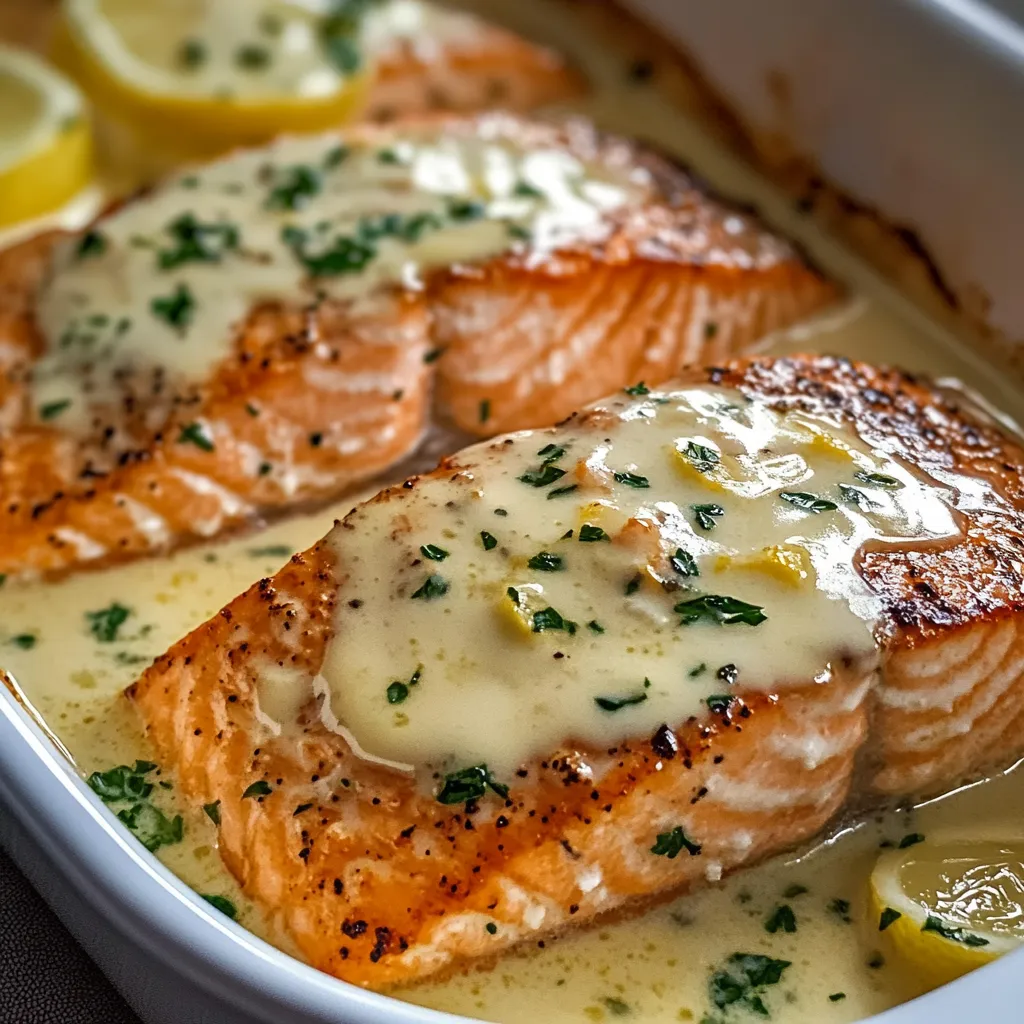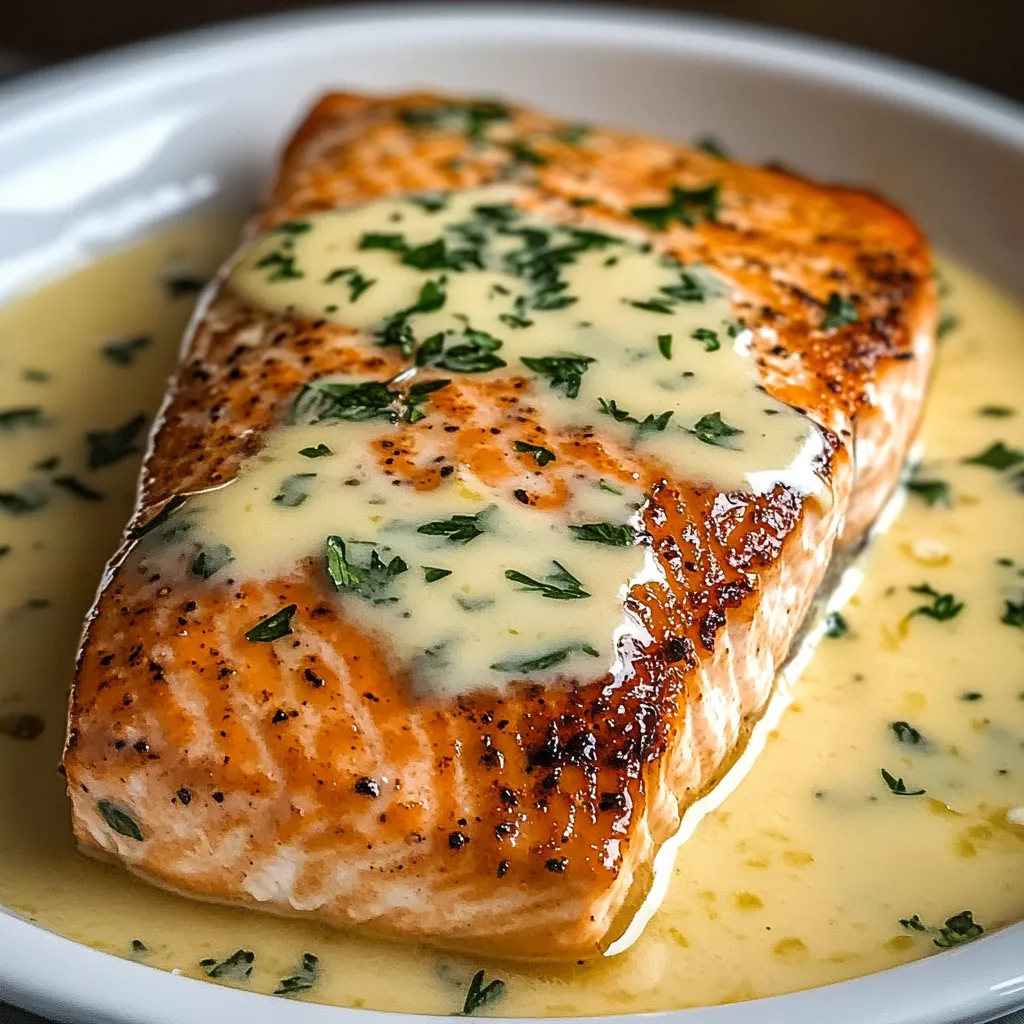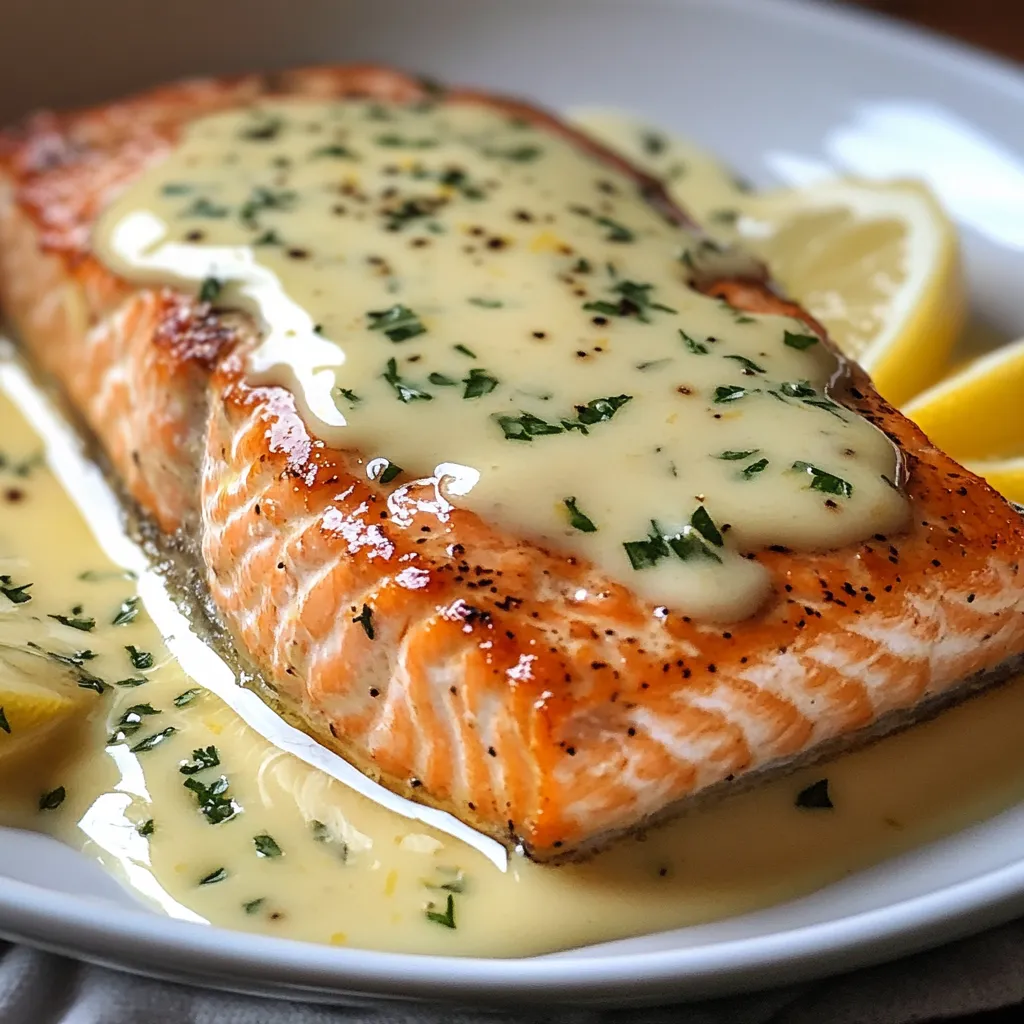 Save
Save
Oven-baked Salmon topped with Zesty Cream Sauce turns ordinary fish into a fancy dinner that'll knock your socks off. The smooth, tangy sauce made with fresh lemon and thick cream takes this quick dinner to a whole new level. Each piece of salmon cooks up just right while the sauce drips into every bite. I came up with this trick while playing around in my kitchen with different fish recipes, and now everyone begs me to make it for family meals and dinner parties alike.
Just the other day, I made this for a few friends who came over, and they couldn't get over how fancy yet simple it was. Everyone wanted extra sauce to pour over their side dishes. It's now my favorite thing to cook when I want to wow people without spending forever in the kitchen.
Stellar Ingredient Choices
- Wild salmon fillets: Go for pieces with bright color and that smell like the ocean. They should feel firm when you touch them.
- Whipping cream: Makes a thick, dependable sauce that feels like velvet in your mouth.
- Plain butter: Lets you add salt your way while giving the dish a rich, buttery feeling.
- Juicy lemons: Squeeze them fresh and grate the peel to cut through the richness and make the salmon pop.
- Premium olive oil: A tasty, fruity oil brings out the salmon's natural flavor and helps make the outside a bit crispy.
- Real garlic bulbs: Pack more punch than the stuff in jars, warming up the whole dish with amazing smells.
- Leafy parsley: Bright and crunchy, it adds color and a light plant flavor that balances everything out.
Nailing The Technique
- Getting Ready:
- Take your salmon out of the fridge 15 minutes early. Wipe the pieces totally dry with paper towels. Put your oven rack in the middle and wait for it to get fully hot at 375°F. Pick a baking dish that fits all your fish without squishing them.
- Adding Flavor:
- Sprinkle lots of sea salt and fresh pepper on your salmon, pressing it in gently. Let the fish sit while you make the sauce so the salt can work its magic.
- Making Your Sauce:
- Start with finely chopped garlic in warm oil, letting it get fragrant but not brown. Slowly pour in room temp cream while stirring all the time. Add lemon juice bit by bit while whisking so it doesn't curdle.
- Putting It All Together:
- Lay your seasoned salmon in the dish, skin down if it has skin. Pour your amazing sauce over each piece, covering them completely. The sauce will bubble up and get a bit thicker while baking, making a beautiful coating.

I grew up in a family that couldn't get enough seafood, and I learned early on that great salmon needs a gentle touch. This recipe respects that idea while adding just enough luxury to make it special.
Delightful Side Dishes
Make this salmon into a complete meal with the right sides. Soft jasmine rice catches all that yummy sauce, and steamed asparagus adds nice crunch and color. If you want something lighter, try it over wilted spinach or with roasted Brussels sprouts. The sauce works great with pretty much any veggie, so you can switch things up depending on what's in season.
Fun Twists
Try this dish in different ways by changing up the flavors. Throw in some fresh dill and capers for a Nordic feel, or mix in tarragon for a French touch. Make it Mediterranean by adding sun-dried tomatoes and basil, or pour in some white wine and shallots for more depth. Each change opens up new pairing options while keeping things simple and elegant.
Smart Storage
Keep leftover fish and sauce in separate containers with tight lids. The salmon stays good for about two days in the fridge. When you want to eat it again, let both parts come to room temperature first. Warm the fish slowly in a 300°F oven and heat the sauce on low heat on the stove, whisking now and then so it stays smooth.
Heat Management
Knowing how your oven works helps get perfect results. Starting at 375°F gives gentle heat that keeps the salmon juicy while letting the sauce get thicker. Look for visual hints: the salmon should look just opaque and flake easily with a fork. A tiny bit of translucent flesh in the middle is perfect, as it'll finish cooking from the leftover heat.
Sauce Success
Making an awesome sauce means paying attention to the little things. Start with cream that isn't cold to avoid separation. Add your lemon juice slowly while whisking all the time. If your sauce gets too thick, add a splash of warm water or broth. The final sauce should coat the back of your spoon but still be pourable.
Perfect Texture
Getting salmon just right comes down to timing. The flesh should be barely opaque and break into flakes with gentle pressure. Don't cook it too long or it'll get dry and chalky. The sauce helps keep moisture in, but getting the cooking time and temperature right is super important.
After cooking salmon hundreds of different ways over the years, this method always gives amazing results. It mixes straightforward cooking with fancy presentation, making it right for any occasion. The sauce brings together old-school French cooking ideas with modern simplicity, creating something that feels both fancy and approachable.
What makes this recipe so great is how flexible and reliable it is. Whether you're making dinner for your family or hosting a special celebration, this salmon dish will bring both comfort and elegance to your table. The mix of perfectly cooked fish and smooth sauce creates a meal everyone will remember and ask you how to make.

From my home to yours, this dish hits the sweet spot between easy and impressive. It shows that with good ingredients and the right techniques, you can make restaurant-quality food right in your kitchen. The way the sauce makes the natural flavors of salmon even better while adding its own luxurious touch makes this recipe stand out from all the others you might try.
Recipe Q&A
- → Which salmon type works better for this dish?
- Either wild-caught or farmed salmon does the job. Choose evenly cut fillets for smooth cooking.
- → Can I prep this meal in advance?
- It's best fresh, but you can make the sauce early and warm it before adding to the salmon.
- → What sides go with this dish?
- Pair it with roasted veg, white rice, asparagus, or even toss the sauce with pasta.
- → When do I know the salmon's ready?
- When it flakes easily with a fork and hits 145°F (63°C) inside, it's done.
- → Is there a heavy cream swap?
- Half-and-half is an option but results in a thinner sauce. Avoid plain milk for this recipe.
